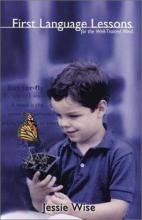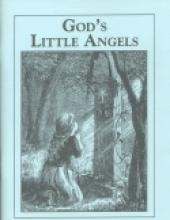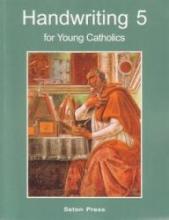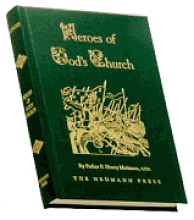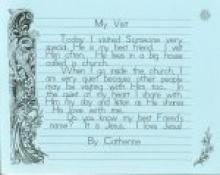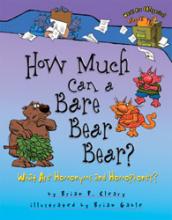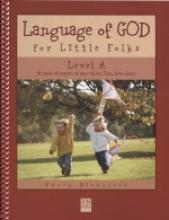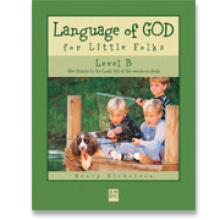Language Arts
English from the Roots Up: Word Cards
This set of 100 cards covers the Greek and Latin root words found in the companion book. 37 words are Greek Roots (cards are outlined in green - don't worry - they are written in our standard alphabet!) and the res are Latin (cards are outlined in red). The back of each card gives the definition and derivatives in an identical manner to the book (includes definitions, et al.), but does not contain the teaching notes and extra words found in the book. Although the cards are printed on paper slightly heavier than that found in the book, they are still quite flimsy and would hold up much better if laminated.
Note: Some parents find that they only need the cards because they cover the most essential mateiral. Others buy only the book and make their own cards. Personally, I am happy to have both.
100 vocabulary cards in a small box
First Language Lessons for the Well-Trained Mind
Intended for use in first and second grades, the 200 completely-scripted lessons in this textbook are a complete guide in "How to Teach English to Young Children". The non-consumable book is actually a textbook for the teacher rather than the student. Lessons are completely secular and include portions of classic poems, stories and rhymes. Also included are original poems and stories as well as a few selections that have been adapted for young children. Pictures are black-and-white line drawings rather than photographs or color reproductions.
Each day's lesson is taught to the student, interactively, utilizing no workbooks or photocopied worksheets. The teacher is an integral part of this course, which combines direct instruction with regular drill and review. First grade lessons are almost completely oral with a Montessori-feel to them. Montessori classrooms use a repetition technique that has been applied to the lesson scripts when a new concept is introduced to the child. The course begins with very simple, very short lessons and builds into longer lessons with very short copywork assignments by the end of the year. Second grade lessons incorporate more pencil-and-paper writing, with some written copywork each day. Composition exercises are oral throughout, focusing on narration from short stories, poetry, and pictures. Poetry memorization selections are short and rhyming, which should make it enjoyable for most students. In addition, many lessons include enrichment suggestions for students who find their lessons comfortably easy. A variety of activities keeps the student engaged from the beginning to the end of each day's lesson and from week to week throughout the course.
In the introduction, Mrs. Wise writes, "I believe we underestimate what young children are capable of learning. We can grow children who exceed the average by exposing them to above-average content––-as long as that content is taught patiently, frequently, and consistently, and is reviewed often." There are educators who think that formal grammar and language study is more suited to later elementary school, but Mrs. Wise shows us how to make English class both productive and enjoyable in the earliest years. An excellent, early foundation in English can provide the necessary background for deeper study in following years as well as foreign language study in elementary school. This book gives the teaching parent everything (s)he needs to provide that foundation.
The very first lesson in first grade is completely oral and introduces the concept of a noun; it takes less than 10 minutes to complete. The early lessons in second grade include an oral teaching part, a written copywork part, drill and review, and poetry memorization. There is a distinct change from the beginning of the book to the end. Some lessons focus completely on picture study (oral composition), and others are just poetry study.
The lessons include both picture study and narration. I didn't find the pictures especially inspiring, but they are "family-type", "everyday-situation-type" of drawings set in current times. I thought the most valuable part of First Language Lessons was that it teaches the mother HOW to get the most out of a picture study by providing a lengthy list of guiding questions. It should be easier for a mother new to this idea to branch out to other pictures after gaining some experience and confidence.
God's Little Angels
This lovely story is reprint of the 1905 book The Transplanting of Tessie. Little Tessie spent six years at a convent boarding school before becoming ill. She finds herself at her uncle's country estate where she recovers and, through many adventures, brings her relatives to the Catholic faith. All of our children enjoyed this touching story. The author writes vividly and with just enough suspense to keep the reader wanting more. Each chapter is followed by a set of comprehension questions (answers at the back of the book) for those who want to use the book as part of their schoolwork. Although I read this story aloud to our children it is also suitable for mature 5th graders and older to read alone. Younger children will enjoy hearing the story and will benefit from having some of the older customs mentioned in the book explained to them. The softcover on this 8 ½" x 11" book is easily torn so owners may want to cover it with clear contact paper before passing it on to their children to read.
Copyrights 1905/1998
Handwriting 5 for Young Catholics
Heroes of God's Church
I think the author does an admirable job in achieving his purpose. We are shown how the Saints were real people who struggled with things like bad tempers and parents who just didn't understand their religious fervor. Some became great saints by just doing the little everyday things well and out of love while others showed incredible heroism through the most agonizing tortures and martyrdom.
The book covers 25 Saint stories, from 6 to 18 pages each, with comprehension questions for each story. We are presented with a variety of Saints of every age with a true diversity of personalities, difficulties to overcome and social classes. The chronological order and selection would also make this a very worthwhile supplement to a study of World History.
The comprehension questions seem suited to mid-grade school (perhaps grades 3-6) but the stories themselves would be appropriate for a wide age range (probably from first grade through adult if care is taken with regard to some of the "scarier" martyr stories for the very young ones).
Holy Papers
This booklet provides thirty-three pages of lined paper with beautiful Catholic pen and ink illustrations. The pages are intended for handwriting practice and may be photocopied for use within your own family. Following the lined pages are approximately forty pages of beautiful religious quotes - printed in both script and cursive - for practicing handwriting. Quotes are organized according to themes such as Adoration, Conscience, Eucharist and Obedience.
Binding details: paper pad binding
How Much Can a Bare Bear Bear?
Homonyms are words that sound and also look alike. But they have different meanings, as in "Can you pass that can, Mike?" Or "May I sail with you in May and coast along the coast?and
Now, some words sound identical but are spelled in different way. These words are known as homophones. Like praise and preys and prays. Though homophones have matching sounds, their meanings aren't the same. And there isn't any question, they're as fun as any game.The homonym and homophone pairs are highlighted in matching colors to make it easy to identify each set. On the whole, we found this book both entertaining and helpful.
Language of God for Little Folks (Level A)
This is a simple and charming, Catholic grammar workbook designed for use in the second grade. It reinforces very basic grammar concepts such as - what constitutes a sentence, nouns and verbs, past and present tense (choosing the correct verb), singular and plural, opposites, simple synonyms, and capitalizing words such as - the days of the week, the months of the year, special titles and the names of God. A complete answer key is included.The book is illustrated with pen and ink drawings (some religious and some charming basic children's pictures) and supplemented with some classic Catholic poetry.
Because there is not a great deal of explanation of how various aspects of grammar work, this works nicely as a supplement to Simply Grammar (reviewed below).
Copyrights 1998/2003/2005
Language of God for Little Folks (Level B)
This simple and charming Catholic workbook provides basic explanations, practices and reinforcement of basic grammar concepts for the third grade. Students practice identifying sentence parts and complete sentences, capitalization, using question marks and "asking words", sentences that command or exclaim, synonyms, antonyms, homonyms, nouns and proper nouns, capitalizing God's the names of God and special titles of Our Lady, singular and plural, possessive nouns, action verbs and "state of being" verbs, past and present tense, helping verbs, verbs that change form, subject and predicate, roots and verb endings, prefixes and suffixes, contractions and abbreviations, syllables, adjectives, pronouns, titles of respect, alphabetizing and the dictionary.
The text includes pen and ink illustrations, Catholic poetry and a complete answer key.
Copyrights 1999/2005

